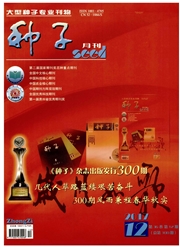

 中文摘要:
中文摘要:
为探明国内某尾矿库渗漏水对其周边植物的生长影响,选用番茄(Lycopersicum esculentum)为材料,取国内某尾矿库周边渗漏水,稀释后并用0%,20%,40%,60%,80%及100%(原液)分别处理番茄种子并测定其发芽率和半致死浓度。将存活的番茄移栽到穴盆中继续用对应浓度的渗漏水处理植株到开花期,利用单细胞电泳技术测定番茄叶片细胞DNA的损伤。结果表明:随着渗漏水浓度的升高,番茄种子的发芽率呈明显的下降趋势,60%比例的渗漏水处理,种子发芽率为63%,接近种子萌发的半致死浓度。渗漏水原液处理下,番茄种子发芽率非常低;单细胞凝胶电泳显示,随着渗漏水浓度升高,番茄叶片细胞彗星图像拖尾加长,说明对番茄遗传损伤加重。试验数据表明,某尾矿库渗漏水对番茄种子的发芽有和细胞有严重的影响。
 英文摘要:
英文摘要:
In order to elucidate the influence of seepage water from tailing dam on the growth to circumjacent plants, the seeds of tomato ( Lycopersicum esculentum) were treated with 0,20% ,40% ,60% , 80% and 100% seepage water. Damage to tomato was determined by the rate of seed germination and comet assay after treatment. The results showed that the rate of seed germination decreased obviously with increasing seepage water concentration. The rate of seed germination was 63% under the treatment of 60% leakage water,which was close to semi lethal concentration of the seed germination. The rate of seed germination was very low under 100% leakage water. The single cell gel electrophoresis Cell comet tail lengthened with the increasing seepage water concentration displayed by. Experimental data showed that there was serious effect to tomato seed germination and cell brought by seepage water from tailing dam.
 同期刊论文项目
同期刊论文项目
 同项目期刊论文
同项目期刊论文
 期刊信息
期刊信息
